How VFX wizards brought the Game of Thrones dragons to life
The hit show's VFX supervisor and producer reveal three secrets of dragon creation.
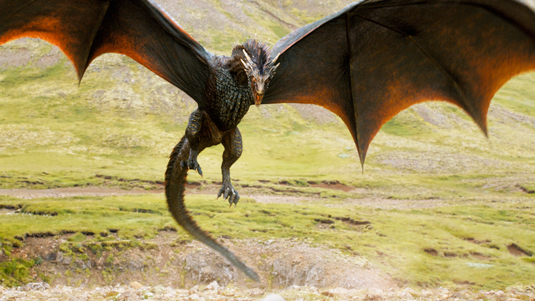
Game of Thrones has become a worldwide phenomenon, and for good reason. A truly epic production, with every episode a mini-movie, it's taken a giant team of talent to bring George RR Martin's fantasy to our television screens.
Steve Kullback and Joe Bauer, VFX producer and supervisor respectively, are tasked with taking and organising the visual effects that make the world so captivating. But while there are countless elements to this world, there's one that fascinates fans more than any other: dragons!
We talked to the pair and discovered three secrets about how Game of Thrones' dragons were created.
01. They're based on real animals

Drogon, Rhaegal and Viserion weren't just designed purely from imagination, begins Baeur: they looked to the real life world of animals for research and inspiration.
The team began by searching the internet for images and video, "just to look at everything related: from alligators, lizards, horny toads and bats", he explains.
They went on to create huge compilations of wildlife images, circling items that they liked and incorporating them into the designs.
When you look at nature and see various threat mechanisms that kick in. We wanted to take advantage of that.
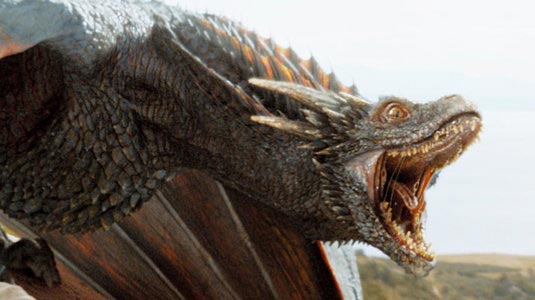
"When I came on, I suggested features for the dragons, like how the horns, fins, etc would perform based on the emotion of the dragon," says Bauer.
Daily design news, reviews, how-tos and more, as picked by the editors.
"There was a point when we were talking about the colour shifting a little bit, just when you look at nature and see various threat mechanisms that kick in – when creatures are angry or their afraid or different things – we wanted to take advantage of that.
"So, the rippling of the fins when Drogon is attacking – it looks like he's riled you know? So we depend on so much real world reference. And the flying too, the flight is patterned after bats, owls and eagles I think. We try to invent from scratch as little as possible truthfully."
The character design work doesn't stop there, of course. As Game of Thrones progresses, the dragons have to grow. And so the show's dedicated dragon designer, Dan Catcher, has the job of sizing them up, and each year they double in size.
"You know they started out as newborn infants and now their coming into their adulthood," explains Bauer. "Dan's got to work out the scale: you can't just take one model and make it bigger.
"Because there is some sense we all have that tells us how big something is by how it's proportioned and how it moves, how the details on it are laid out so that's really in his ball park. And he's really good at it."
02. They breathe real fire
In episode nine of season five, Drogon launches himself into an arena and, feeling threatened, attacks a lot of people with his fiery breath. "These days, you'd expect that fire to be created in CG, but don't be fooled: that's really fire you're seeing on screen," Kullback explains.
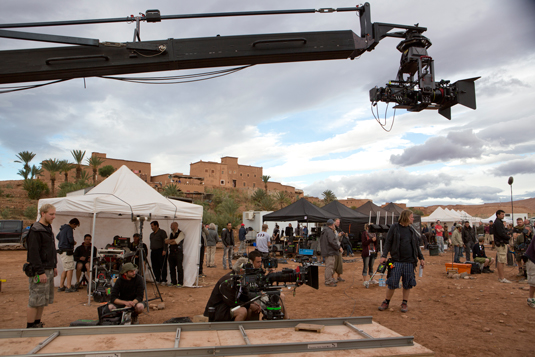
With such a short post-production time, the team don't like to leave too much to do after shooting starts. For this reason, they often look back to old school special effects when creating many of the realistic shots. "We think it's smarter," Kullback says, "because you end up having something that is more organic but it's really also more practical. It looks better."
"The dragons have a wingspan of about 40 feet and breathe fire that shoots about 50 feet, so when Drogon comes into an environment and blasts a lot of people with fire you'd assume it's CG fire and CG people.
"But what Joe proposed, in a fit of insanity (where we all sat around the table, mouth slack-jawed, looking at him going 'are you crazy?') was to animate the dragons in advance and take that animation and apply it to a motion control camera rig.
You essentially have the fire and you have the stunt people getting hit and igniting and you have their performance all caught in camera!
"The camera rig would essentially play the part of the dragon, and then fix a flame thrower to the camera head and blast fire 50 feet at stunt people and have that be the fire coming out of the dragon's mouth.
"So, you essentially have the fire and you have the stunt people getting hit and igniting and you have their performance all caught in camera. Then you are left with having to create the dragon and integrate it and tie it into into the fire.
"Initially we all looked at him like he was nuts but then we started making phone calls and exploring the feasibility of it all, doing some testing. And ultimately that's exactly how we went about it and it turned out to be the fastest, most cost effective, practical way to do it.
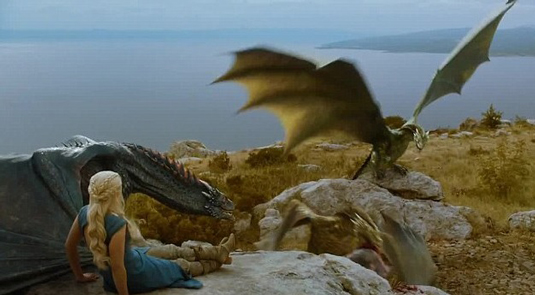
"It was also much safer on set even though we were lighting 20 stunt players on fire (ha!) it was safer because the behaviour of all the fire and the behaviour of all the equipment was completely robotic and completely repeatable and completely predictable; so that everybody knew exactly how, when, where and how everything was going to go down and could be precisely timed and dialled into it."
Bauer recalls being nervous when it came down to it: "Just the fact that by our wishes we had 20 people on the receiving end of a 50 foot flame thrower was nerve wracking. Mostly because most of it was out of our specific control, it really came down to the prep of the stunt people – and they are great and the whole thing was completely safe. I think there was one tiny blister at the tip of somebody's little finger (and that's a testament in itself!).
Just the fact that by our wishes we had 20 people on the receiving end of a 50 foot flame thrower was nerve wracking.
"Also, it was exciting that the production was willing to go down the road with us, because everyone, including the director was very concerned. You know with something like this, something so off the radar, if it goes wrong, you can lose a day.
"A fire reset is two hours and these shoot days are so packed, losing 10 minutes means something. So if this whole thing had gone south it would have have rippled quite a lot. The fact that we've got such a trust level with production says a lot for how we all work together on this end."
03. How the Daenerys flight scene was created
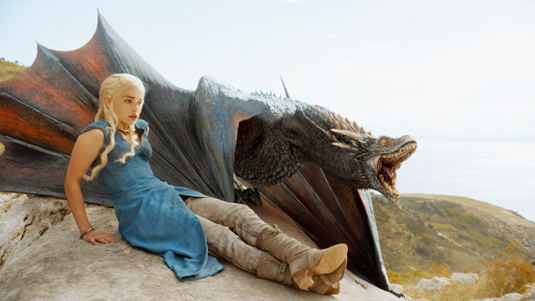
One of this seasons' most impressive and anticipated scenes was when Daenerys finally rode one of her adult dragon babies through the air. Bauer explains how that was created.
"We pre-vis everything out with as much real world stuff as we can, so that everything is accurate to the locations, even the scale of the actors who we duplicate in CG (and the dragons)," he says. "So it was easy to figure out how much of the dragons Emilia Clarke (Daenerys) would be interacting with on set."
The whole background was CG because there isn't a real way to shoot a background for travelling along with a flying dragon!
"Our special effects team built a duplicate of that section of the dragon based on our CG model and it was a combination of part hydraulic and part manually operated, so that based on the animation of the dragon we had already done we knew what kind of movement it needed to do in the scene with Emilia on it."
The team were able to capture her in the arena on green screen with fans, etc, shot on camera and the rest of it was putting the dragon in. The whole background was CG too, because there isn't a real way to shoot a background for travelling along with a flying dragon!
"Parts of her dress that needed to blow with more velocity than we could create on the ground became CG as well," Bauer adds.
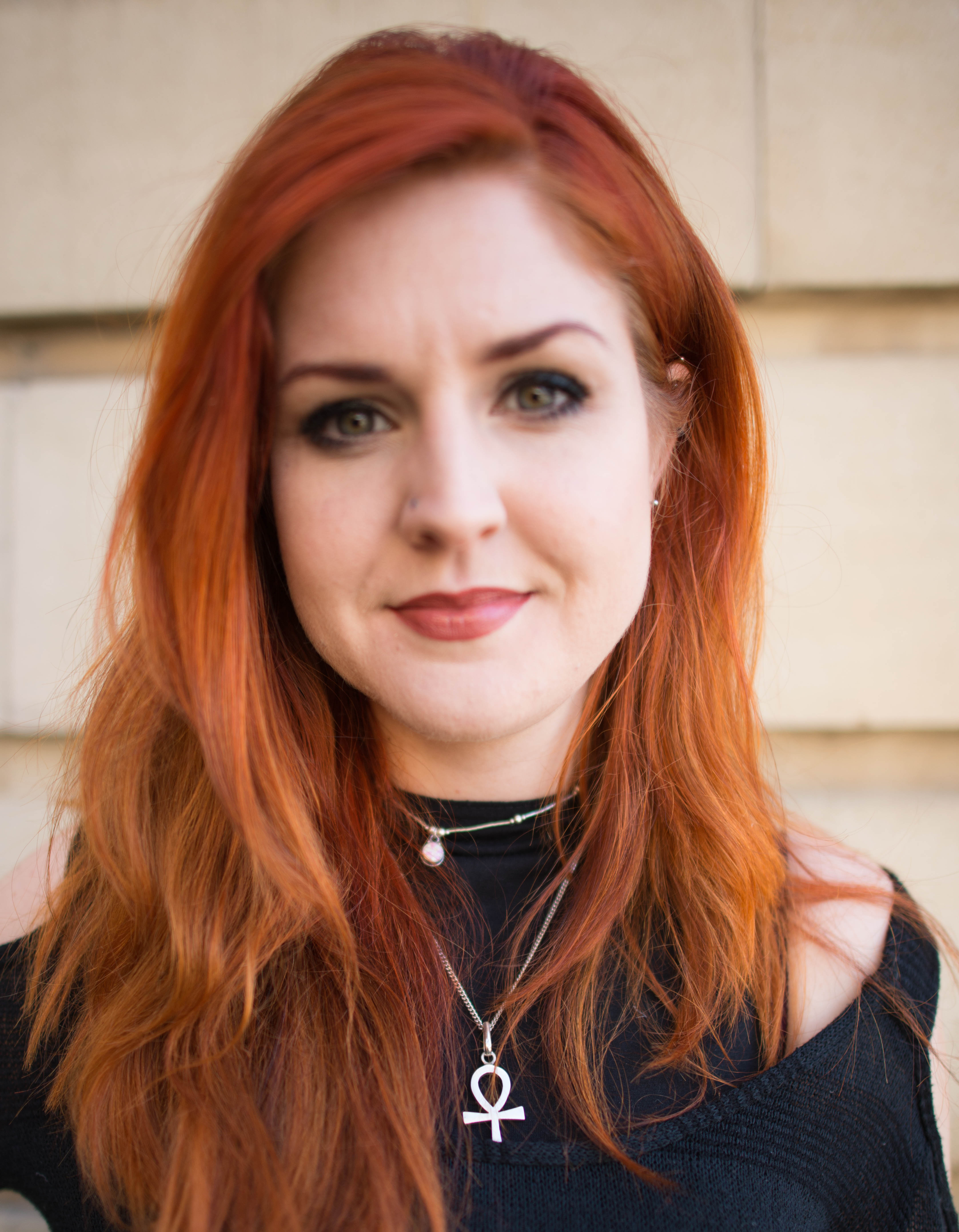
Alice Pattillo is a freelance journalist with a passion for heavy metal, horror, science fiction, fantasy and comics. She has over seven years experience in magazines, formerly working as a staff writer at Creative Bloq, Imagine FX, Computer Arts and 3D World, as production editor for Guitar World and Guitar Player and online editor of Metal Hammer.
